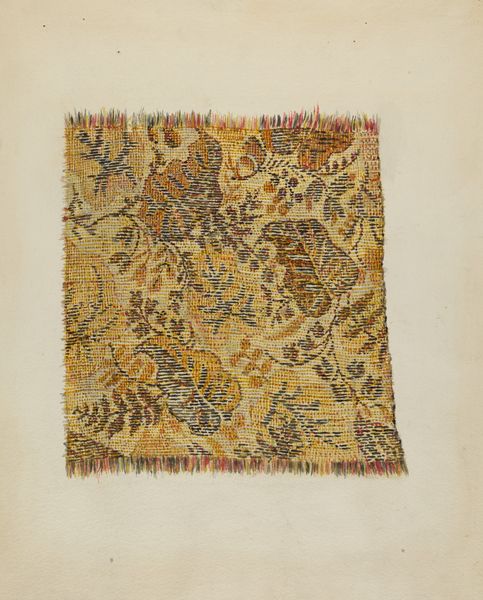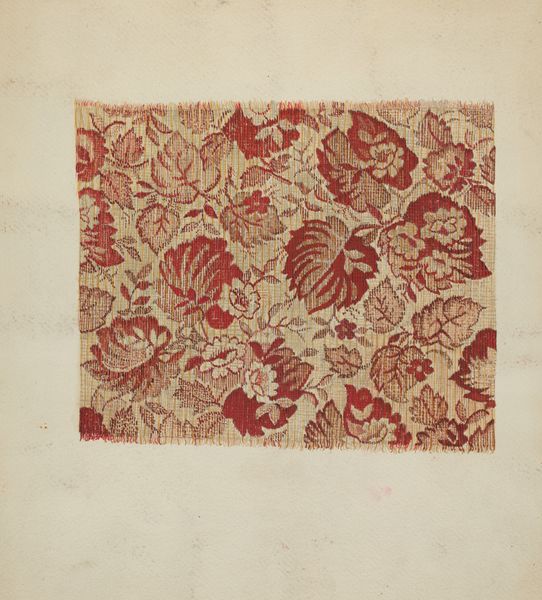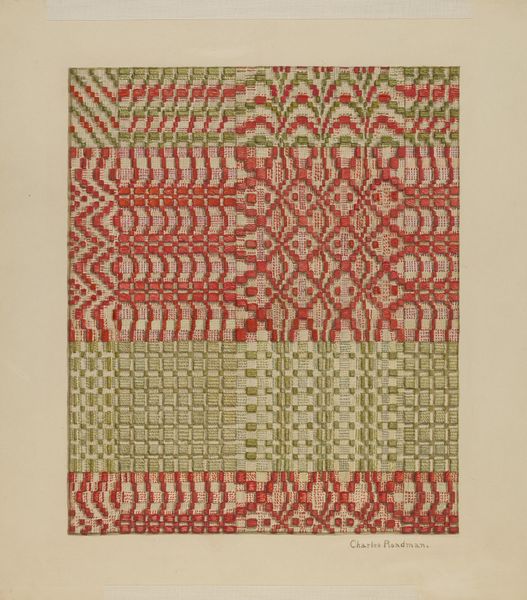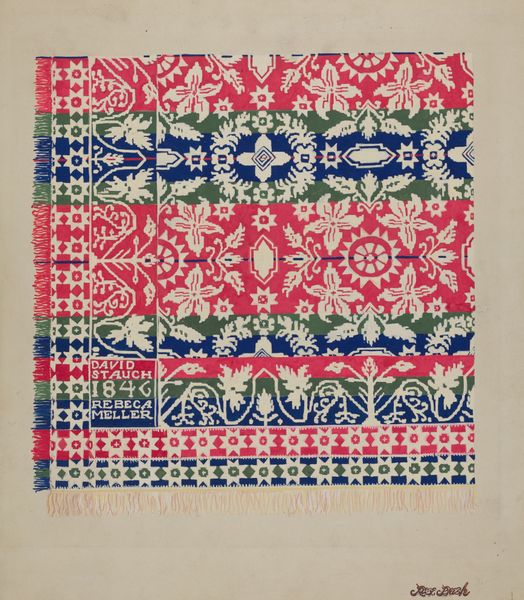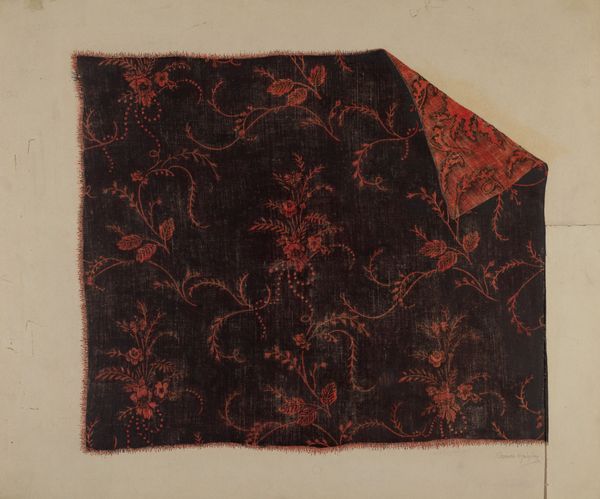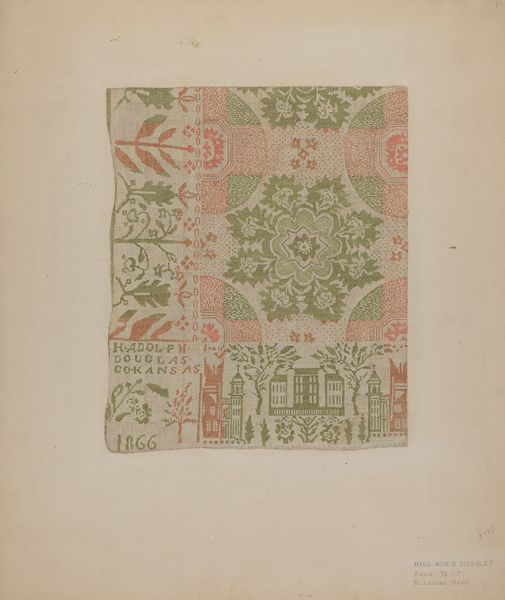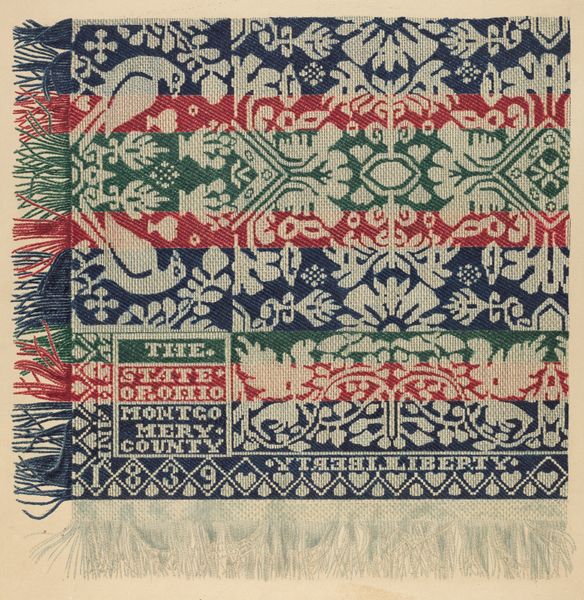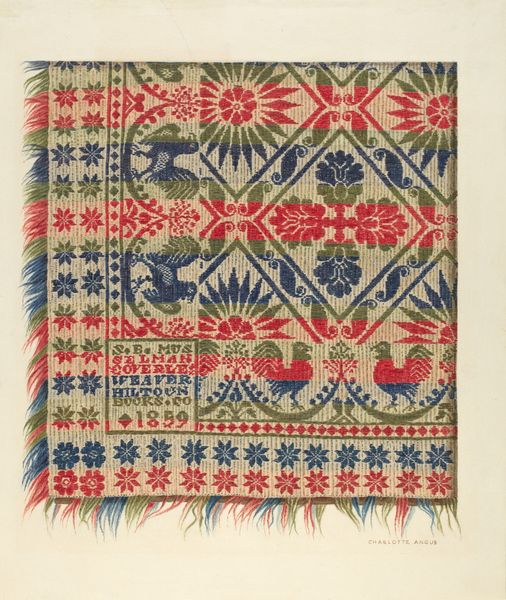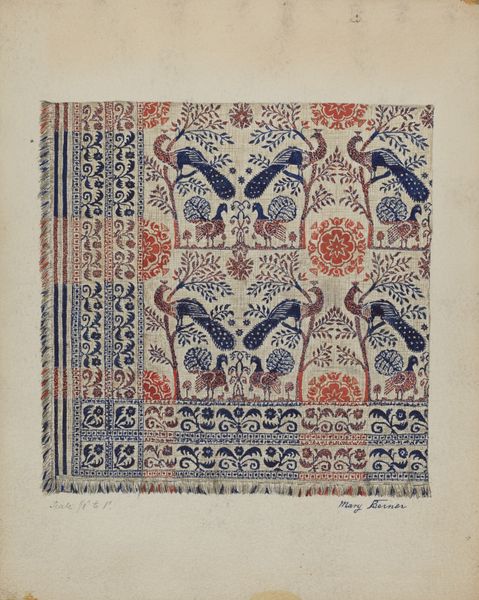
#
water colours
#
fabric design
#
watercolor
Dimensions: overall: 49.8 x 42.8 cm (19 5/8 x 16 7/8 in.) Original IAD Object: 98" long; 72" wide
Copyright: National Gallery of Art: CC0 1.0
Curator: Hello! Let's talk about this "Coverlet" made around 1937, artist Harry Jennings, watercolor and graphite on paper. Editor: This rendering of a textile is interesting – it's so precisely detailed! I am curious, what significance do you see in such a traditional motif being rendered using watercolor? Curator: Precisely detailed indeed, a characteristic deeply rooted in folk art traditions and imbued with meaning beyond mere aesthetics. The act of documenting the textile in watercolor speaks to preserving cultural heritage, especially during the early 20th century, as the rise of industrial production threatened traditional craft practices. These "coverlets" have historic social connections, specifically being women's artistic productions. By recreating and documenting this domestic work, how is the artist attempting to legitimize its cultural value and historical relevance? Editor: I see your point. The painting elevates the work involved from craft to art, or at least acknowledges them as equally important, which might challenge preconceived ideas about labor, skill, and gender. Do you think there's a tension here, since it's a man doing this? Curator: It's crucial to consider gender roles, isn't it? Jennings’ position as a male artist documenting this particular domestic craft complicates this narrative further. Is he attempting to validate the artistry of women, or is there also an act of appropriation at play? Could we explore how the representation of folk art by a male artist impacts its reception and historical interpretation? What do you think? Editor: I never thought of it that way. I was simply looking at the beauty of the object and enjoying the symmetry and details. Curator: Right, by discussing it within a context of gender, labour and class we reveal it's a perfect demonstration of the intertwined nature of art, culture, and social structures! Editor: Yes, and to consider the role of preservation alongside artistic expression – there's much more here than meets the eye. Thank you for providing so much needed historical context!
Comments
No comments
Be the first to comment and join the conversation on the ultimate creative platform.
